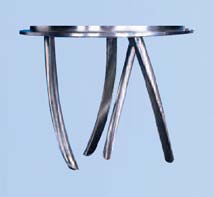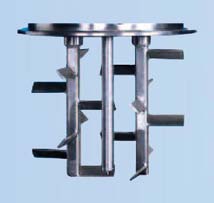Tech Report
Blending and drying high density powders

Technology Brief
Consider the benefits of blending and drying dense powders in a double planetary mixer.
A new way of processing dense powder blends
For years, the challenge of blending extremely dense slurries, then drying the batch to powder form, has been a job for the traditional vacuum dryer with a rotating vessel. As the density of the ingredients rises, operators cope by reducing batch size to minimum levels or slowing down the blending rate to enable the hardworking blender/dryer to handle the job. In extreme cases, units are reinforced with a heavy-duty drive system and more wear-resistant materials of construction.
Today, processors are finding that a completely different kind of blender/dryer can handle the heaviest of materials more easily. This new solution is based on the aggressive blending action of the double planetary mixer, combined with carefully controlled heat and vacuum, which can outperform familiar blenders and dryers by a wide margin. As a vacuum dryer/granulator, the double planetary mixer can produce dramatic gains in end product quality and throughput.
Planetary mixing and vacuum drying
Long used in the pharmaceutical industry for preparing high-quality granulations, double planetary mixers feature two identical blades that rotate on their own axes while orbiting together on a common axis. Mixing is very efficient because the blades continuously advance along the periphery of the mix vessel, removing material from the walls and transporting it to the interior. This translates to a highly effective heat transfer between the jacketed vessel and the product. Drying is completed in very short cycle times, especially under vacuum conditions.
Blade design matters
In the past, rectangular-shaped paddles and finger blades were the two basic stirrer designs used in double planetary mixers. The introduction of "High Viscosity" (HV) blades developed by Charles Ross & Son Company actually extended the mixer's processing capability in terms of handling denser and more viscous formulations. For instance, rectangular stirrers are usually capable of mixing products up to around 2 million cP while the HV blades are proven effective for viscosities upwards of 6 million cP.
The HV blades feature a precisely angled helical contour which generates a unique mixing action: the sweeping curve firmly pushes batch material forward and downward, keeping it within the mixing zone at all times. In drying operations, fluids and solids are kept in constant motion by the orbital mixing pattern whether the batch is in the slurry, paste/putty or granulation stage. As a result, all constituents are extremely evenly distributed. There are virtually no dead zones in the mixing area and even the vessel sidewalls remain clean since the product is continually being exchanged.
Planetary Mixer Blade Designs used for Granulation Processes

"HV" Blades

Rectangular Blades

Finger Blades
Sample Application:Tungsten Carbide Powders

A manufacturer of tungsten carbide preforms uses two Ross Double Planetary Mixers for vacuum drying their tungsten carbide heptaneslurry in 600-lb batches. Each double planetary dryer/granulator produces thoroughly dried tungsten carbide powder in 1-1/4 hours. These mixers replaced conical tumbling driers which could only handle 100-lb batches yet took 6-8 hours to arrive at the finished product. In addition, the double planetary mixers are easier to clean between batches.
"Our final granulation is extremely uniform in size, moisture content, and the encapsulation of each tungsten carbide particle. This uniformity is absolutely crucial, because the slightest flaw in the granulation can lead to the failure of a customer`s part," says the plant manager. "The double planetary mixer is an entirely closed system, and we are able to reclaim more than 95% of our solvent, easily exceeding EPA regulations and helping to ensure asafe working environment in our plant," he adds.